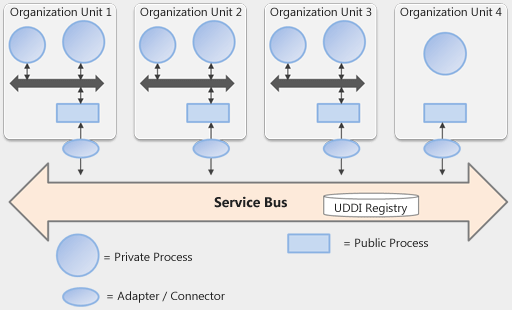|
Exchange of
information between business units (B2B) and
government agencies (G2G) is an active area of work
at present. Here are some examples of B2B and G2G
integrations:
• A supply chain system consisting of several
consumers and suppliers
• A B2B marketplace with numerous buyers and sellers
• Business networks, such as health information
networks (HINs), that are formed between firms for
special purposes.
• G2G systems (i.e., communications between
government agencies) that involve communications
between public safety, law enforcement and the
judicial system.
• Entrepreneurial Networks between entrepreneurship
sites, funding bodies and buyers
• Educational Networks between various educational
agencies
In addition, the
divisions/sites of large corporations interact with
each other in a manner that is similar to B2B trade.
For example, the divisions of GM (e.g., Chevrolet
and Buick) interact with each other as business
partners.
Within each of these categories, significant
differences exist across various industry sectors.
Even the differences between competing groups of
partners in the same industry sector can be
significant. The need to link together independent
organizations and various information systems is
common to all solution areas. The set of
technologies that compose this infrastructure and
the approaches used to implement it are the focus of
B2B/G2G integration.
SOA (Service Oriented
Architecture) plays an important role in B2B trade
and B2B integration. The following figure shows a
common B2B integration configuration that introduces
a “B2B Service Bus” for communications between
different companies (organizational units) for B2B
trade. Note that the B2B bus only communicates with
the public applications of different organizations
and that the public applications are also players on
the internal integration busses. Several standards
such as NIEM (National Inter-agency Exchange Model)
have been introduced. SPACE provides extensive
support for B2B and G2G integrations (please review
the Stage 3 and Stage 4 materials in the “Planner Learning Corner").
 |



